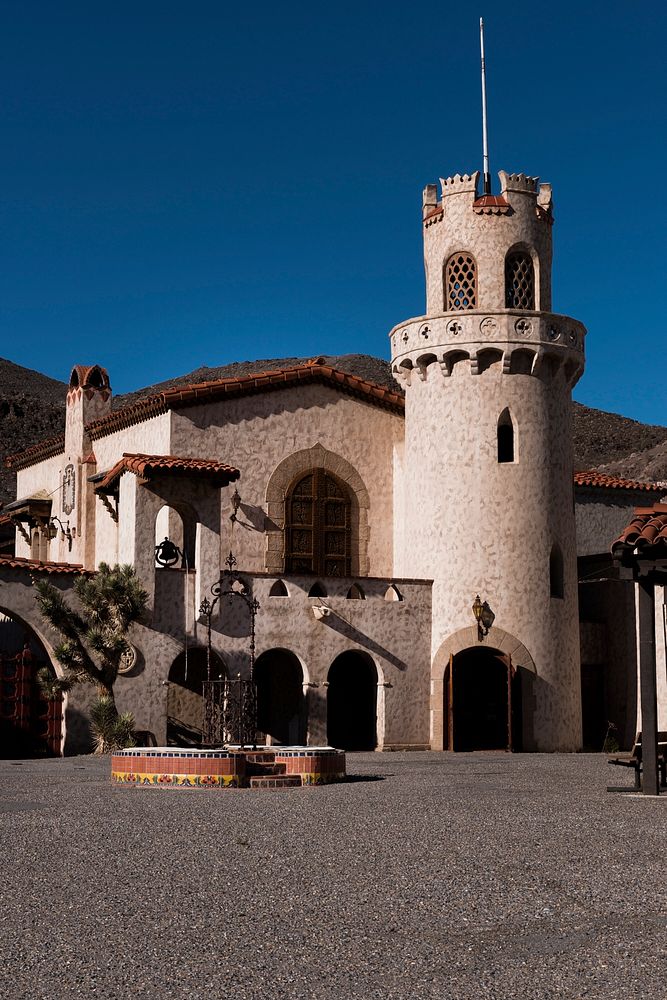
"Scotty's Castle" is a most anomalous attraction in Death Valley, the stretch of California desert that is best known for its blistering mud flats, arid dunes and mountainsides, and barren, below-sea-level desert depressions.
"Scotty's Castle" is a most anomalous attraction in Death Valley, the stretch of California desert that is best known for its blistering mud flats, arid dunes and mountainsides, and barren, below-sea-level desert depressions.
Removed from most of the park in its far-northern reaches near the Nevada border, Death Valley Ranch, as this elegant home is properly known, is a window into the life and times of the Roaring 1920s and Depression '30s. It was and is an engineer's dream home, a wealthy matron's vacation home and a man-of-mystery's hideout and getaway. Walter Scott, who became known as "Death Valley Scotty," convinced everyone that he had built the castle with money from his rich secret mines in the area. Another man, a sickly Chicago millionaire named Albert Mussey Johnson, actually built the house as a vacation getaway for himself and his wife Bessie. Scotty was a cowboy, an entertainer, and a friend of Johnson's; Johnson put up the money. The two-story, Mission Revival and Spanish Colonial Revival-style villa in the Grapevine Mountains was constructed in the early 1920s after Scott convinced Johnson to invest in his gold mine in the Death Valley area. By 1937, Johnson had acquired more than 1,500 acres (610 ha) in Grapevine Canyon. After Johnson and his wife made several trips to the region, and his health improved, construction began. It was Mrs. Johnson's idea to build something comfortable for their vacations in the area, and the villa eventually became a winter home. The Johnsons hired Martin de Dubovay as the architect, Mat Roy Thompson as the engineer and head of construction, and Charles Alexander MacNeilledge as the designer. Unknown to the Johnsons, the initial survey was incorrect, and the land they built Death Valley Ranch on was actually government land; their land was further up Grapevine Canyon. Construction halted as they resolved this mistake, but before it could resume, the stock market crashed in 1929, making it difficult for Johnson to finish construction. Having lost a considerable amount of money, the Johnsons used the Death Valley Ranch to produce income by letting rooms out. The Johnsons died without heirs and had hoped that the National Park Service would buy the property, and in 1970, the National Park Service purchased the villa for $850,000 from the Gospel Foundation, to which the Johnsons left the property. Walter Scott, who was cared for by the Gospel Foundation after Johnson's passing, died in 1954 and was buried on the hill overlooking Scotty's Castle, next to a beloved dog. Original image from Carol M. Highsmith’s America. Digitally enhanced by rawpixel.
